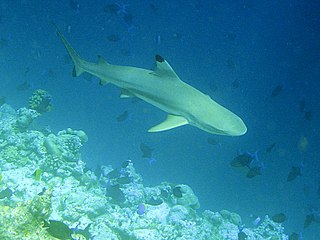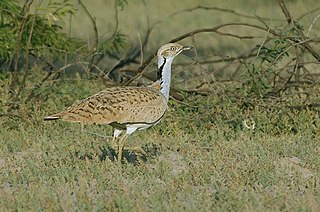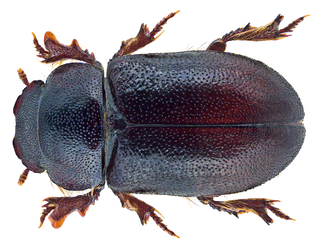
Genus is a taxonomic rank above species and below family as used in the biological classification of living and fossil organisms as well as viruses. In binomial nomenclature, the genus name forms the first part of the binomial species name for each species within the genus.

Requiem sharks are sharks of the family Carcharhinidae in the order Carcharhiniformes. They are migratory, live-bearing sharks of warm seas and include such species as the bull shark, lemon shark, spinner shark, blacknose shark, blacktip shark, grey reef shark, blacktip reef shark, silky shark, dusky shark, blue shark, copper shark, oceanic whitetip shark, and whitetip reef shark.

Nanoarchaeota is a proposed phylum in the domain Archaea that currently has only one representative, Nanoarchaeum equitans, which was discovered in a submarine hydrothermal vent and first described in 2002.

The Celastrales are an order of flowering plants found throughout the tropics and subtropics, with only a few species extending far into the temperate regions. The 1200 to 1350 species are in about 100 genera. All but seven of these genera are in the large family Celastraceae. Until recently, the composition of the order and its division into families varied greatly from one author to another.

Glyphis is a genus in the family Carcharhinidae, commonly known as the river sharks. They live in rivers or coastal regions in and around south-east Asia, Africa and parts of Australia.

Chlamydotis is a genus of large birds in the bustard family. The genus name is from Ancient Greek khlamus, a horseman's cloak with weights sewn into the corners, and otis, bustard.

The Carangidae are a family of ray-finned fish that includes the jacks, pompanos, jack mackerels, runners, trevallies, and scads. It is the largest of the six families included within the order Carangiformes. Some authorities classify it as the only family within that order but molecular and anatomical studies indicate that there is a close relationship between this family and the five former Perciform families which make up the Carangiformes.

Connaraceae is a pan-tropical plant family of 19 genera and more than 180 species of largely evergreen trees, woody shrubs and climbers.

A leopard pattern is a spotted color pattern, particularly in the hair coat or skin of animals, but can also describe spotting patterns in plants and a distinctive print appearing on clothing and other fabrics.

The snow leopard, occasionally called ounce, is a species of large cat in the genus Panthera of the family Felidae. The species is native to the mountain ranges of Central and South Asia. It is listed as Vulnerable on the IUCN Red List because the global population is estimated to number fewer than 10,000 mature individuals and is expected to decline about 10% by 2040. It is mainly threatened by poaching and habitat destruction following infrastructural developments. It inhabits alpine and subalpine zones at elevations of 3,000–4,500 m (9,800–14,800 ft), ranging from eastern Afghanistan, the Himalayas and the Tibetan Plateau to southern Siberia, Mongolia and western China. In the northern part of its range, it also lives at lower elevations.

Cheirodes is a genus of darkling beetles in the Melanimonini tribe. It was formerly known as Anemia until 1973, when T. J. Spilman determined Anemia to be a synonym of CheirodesGéné, 1839.

Notiophilus is a genus of ground beetle native to the Palearctic, the Nearctic, the Near East and North Africa. Most known for their distinctive head shape and size-body ratio the genus is sometimes referred to as the springtail stalkers.

Amphioctopus fangsiao, called webfoot octopus, is a species of octopus, a cephalopod belonging to the genus Amphioctopus. It is found in the Pacific Ocean, including off the coasts of New Zealand as well as in the Yellow Sea and surrounding Chinese shores. It is also commercially fished.
Spathula is a genus of dugesiid triclad. Its species are found in Australia and New Zealand.

Gonioctena is a genus of leaf beetles belonging to the family Chrysomelidae, subfamily Chrysomelinae.

Agelaea fulva is a species of ground beetle from the Platyninae subfamily that is endemic to Sardinia.
Agelaea himalayica is a species of ground beetle from the Platyninae subfamily that is endemic to Nepal.

Agelaea is a genus of plants in the family Connaraceae.

Agelaea pentagyna is a species of flowering plant in the family Connaraceae. It is found in Africa.
















